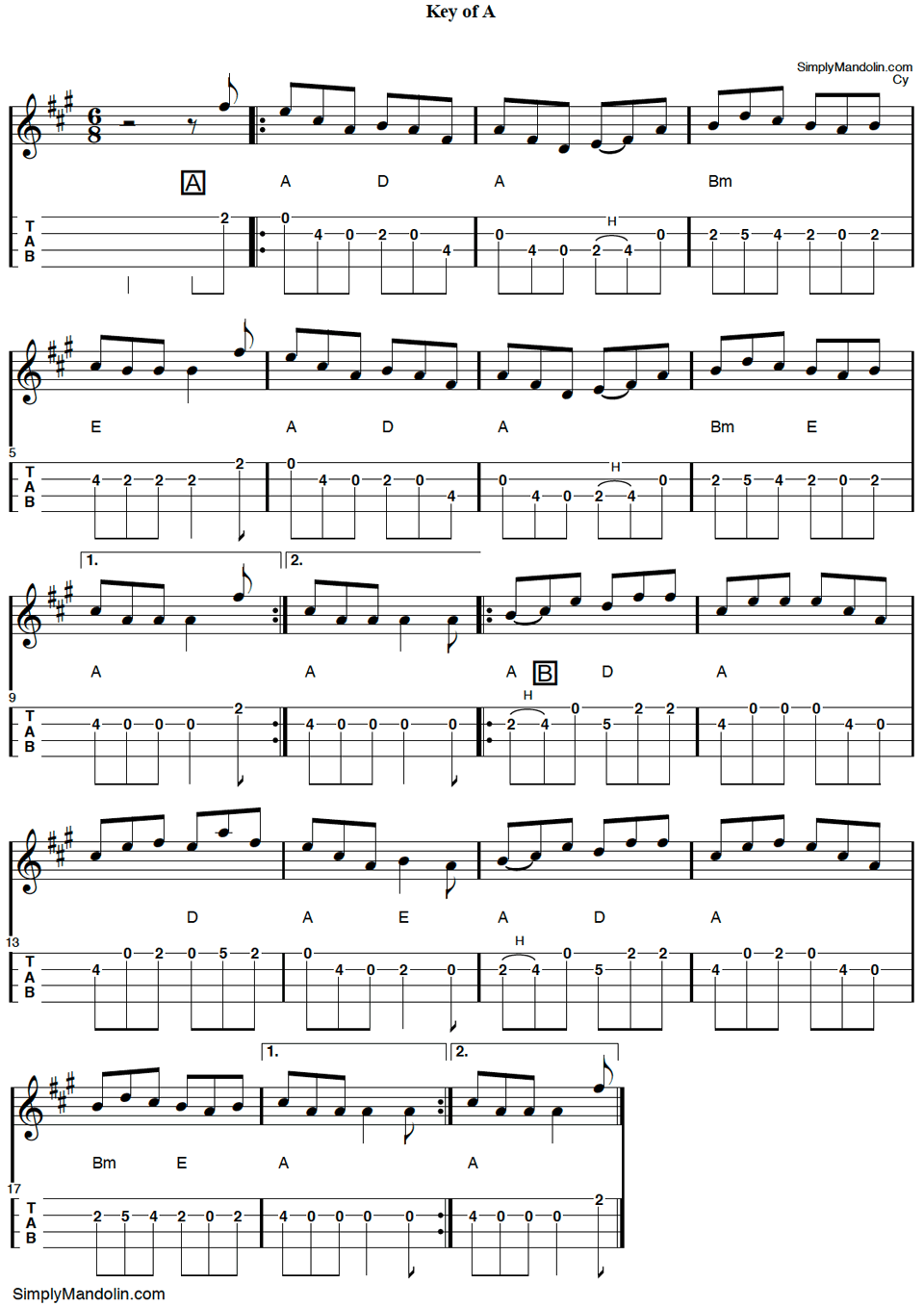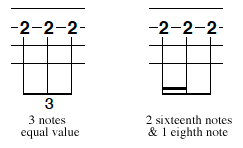Triplets on the mandolin
Triplets are used to embellish an arrangement and can be found in all types of music. They can be hard to learn, and difficult to get up to speed, but with practice they can be mastered. You may even learn to just drop them into a tune as you play! This article is not intended as a method to teach you the mechanics of playing triplets on the mandolin. It’s meant as a practice exercise.
You’ll find a new tune to learn, as well as a .PDF download packed full of triplets. The idea is to practice those examples, then take a triplet or two out, and add them to the original arrangement. In that way, you may get a feel for how they’re played, and how to incorporate triplets into an arrangement.
The Tune
In Irish and Scottish music the triplet is fairly common. And, a traditional way to add embellishment. The jig is a great place to start because you’re using a down-up-down, down-up-down picking pattern. As a result, your hand will usually be moving in the proper direction to pick up the next note after the triplet.
Today’s tune is an Irish jig titled “An Irishman’s Heart to the Ladies”. It’s also called “Heart to the Ladies”, “Health to the Ladies”, or just “To the Ladies”.
This particular version is in the key of Amaj, without any triplets. The triplets will appear in the exercises, later.
The ‘A’ part is usually played twice, then the ‘B’ part twice (AABB).
Listen to “An Irishman’s Heart to the Ladies” for mandolin.
An Irishman’s Heart to the Ladies

Download:
Tab and Music
Just the Notation
Just the Tab
Adding triplets
The idea is to learn to play the tune as above, without triplets. Once you’ve got comfortable with that, download the example files below and give them a go. After practicing the examples for a while, try inserting triplets into the original arrangement one or two at a time.
Note: You’re playing a down-up-down, down-up-down picking pattern, so if a triplet starts on the 2nd or 5th beat in the bar, it’ll start with an up-stroke. Anywhere else, and the triplet will start with a down-stroke. You may find starting with an up-stroke takes a little bit more practice.
Download:
Triplet Exercises 1
Triplet Exercises 2
Just so you know, I usually write triplets as 2 sixteenth notes and an eighth note instead of the conventional way as shown in image 1 below. Please don’t send me an email to tell me I’ve written the triplets wrong.

I really don’t do it that way to confuse anybody. I do it so the midi playback in Tabledit sounds a little closer to what I’m playing on the mandolin – perhaps a little closer to normal (if you can call ‘midi’ normal).
But, when you listen, a triplet sounds more like 2 sixteenth notes and an eighth note (at least that’s what I hear), instead of 3 notes of equal duration.
Exercise 1 at 100 bpm
Exercise 2 at 100 bpm
Practicing the triplets
You may have a practice regimen that works best for you, and that’s great? If not, I do have a few suggestions that might help you work on triplets:
1 – Take your time
Don’t expect to master it in a day. Set a realistic goal. Don’t get frustrated if it seems to take longer than you thought. It’ll come.
2 – Play it in context
Also, don’t just play the triplet. Practice at least a 3 or 4-bar phrase. As a result, you’re not just working on the triplet, but also how to fit it into the rest of the arrangement. That’s the most difficult part.
Like any other skill, relaxation is the key. It’s hard not to tense up as you anticipate the triplet.
3 – Use a metronome
Practice with a metronome at a slow tempo so you can play the triplets easily. Stay there for a while and work on relaxing. Then move up a click and try it again. Work on relaxing. When you can play comfortably at that speed, move up another click. Keep moving up a notch until you just can’t fit that triplet in. Then move back down to the original tempo and start over again. Do this 5 or 6 times, then finish the exercise on a successful note (pun intended).
When you’re comfortable, start the exercise at a little faster tempo.
Too many triplets!
The example exercises are meant to be just that – exercises and examples of triplets. They are not meant to be a break, or a solo. There are too many triplets!!
Triplets should be used very sparingly. Remember, the idea is to embellish the tune, not to make it more complicated or difficult.
Good Luck!
Hope you like the tune! Did you find this article helpful? Please feel free to leave comments.
Cy…

